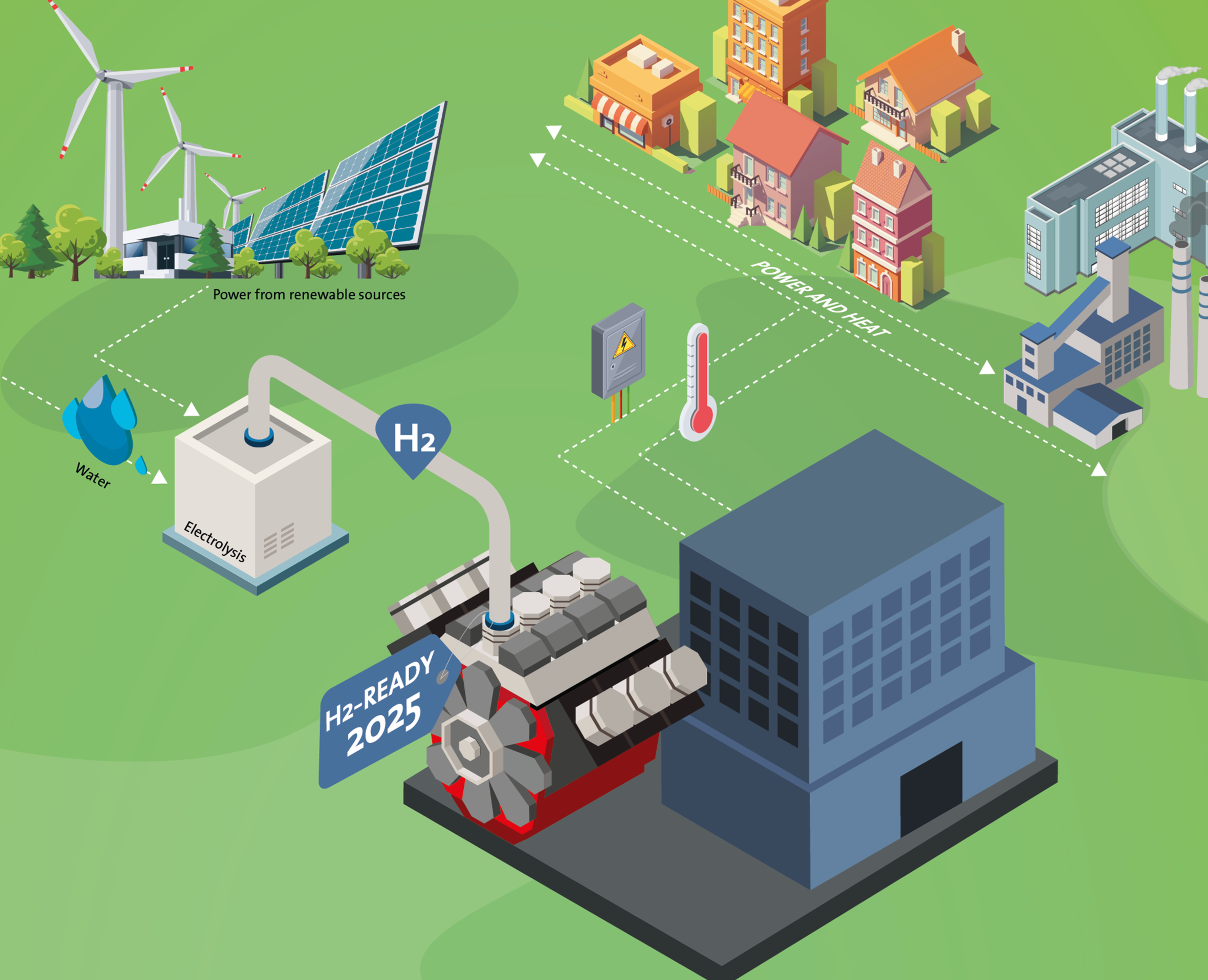Mission 10
Hydrogen produced 100% from renewable sources enables climate neutrality – from 2025 on, new stationary IC engines for power and heat generation will be ready for H2.
Regeneratively produced hydrogen is at the center of CO2-free energy generation as an energy carrier– in addition to the direct use of "green" electricity (see Mission 9). It is produced by electrolysis of water with electricity from renewable sources. This hydrogen is CO2-free and can be used in a wide variety of ways, such as in fuel cells or engines. In Mission 2, we explained how internal combustion engines (thanks to their flexibility) ideally complement renewable energy sources and make a crucial contribution to security of supply in the energy sector. At present, these engines are still predominantly powered by natural gas and thus already have a CO2 advantage over coal (see Mission 8). If they now generate electricity and heat directly from hydrogen, they will operate in a climate-neutral manner and without producing CO2 – a real milestone in protecting the climate and the environment.
Stationary internal combustion engines are long-lived assets that require high levels of investment from their operators. Engines that are being commissioned today or in the near future and initially are still powered by conventional fossil fuels must therefore be adaptable to the requirements of a climate-friendly energy supply, so that investment security and thus willingness to invest are created. Newly purchased stationary combustion engines for power and heat generation from 2025 onwards will therefore be able to burn up to 100% hydrogen, possibly after updates or specific retrofits.
Overall, by the way, a hydrogen engine works no differently than any other internal combustion engine and thus follows long-tested and proven principles of energy conversion. However, engineers have faced and continue to face countless challenges that have had to be overcome in order to achieve outstanding reliability and efficiency in hydrogen operation as well. Facing these problems is ultimately a purely conventional and solvable, but non-trivial development task. For example, to give a concrete example, all components must meet particularly high requirements for tightness, since hydrogen diffuses strongly due to its small molecular size. In addition, H2 has very poor lubricating properties. Nevertheless, by 2025 at the latest, new stationary combustion engines for power and heat generation will be ready for H2


